The latest ASIC data shows that the construction sector leads the nation’s insolvencies, with 2,795 firms going under so far this financial year, representing a 24% increase on 2024.
The following chart from Justin Fabo from Antipodean Macro illustrates the rising construction sector insolvencies, which are tracking at around double the pre-pandemic norm:
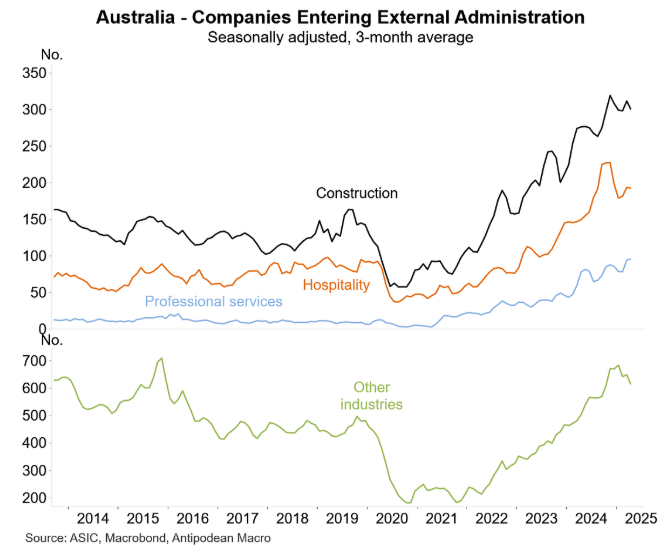
Last week, Mirvac Group CEO Campbell Hanan warned that the collapse of around 7,000 builders and subcontractors in the previous three years has strained the development industry and is exacerbating the housing shortage.
“We have seen close to 7000 insolvencies in three years. That is a really significant event for a market to work its way through”, Hanan said.
“The fact that you have wonderful tier one builders losing money, still, four years after Covid, that is a sign that things have to correct in a certain way”.
“I think ultimately, the cost of building everything, in every asset class, is going up, and going up for a period of time”, he said.
As Alex Joiner from IFM Investors shows below, residential construction costs in the ABS Producer Price Index have risen by 43% since the start of the pandemic:
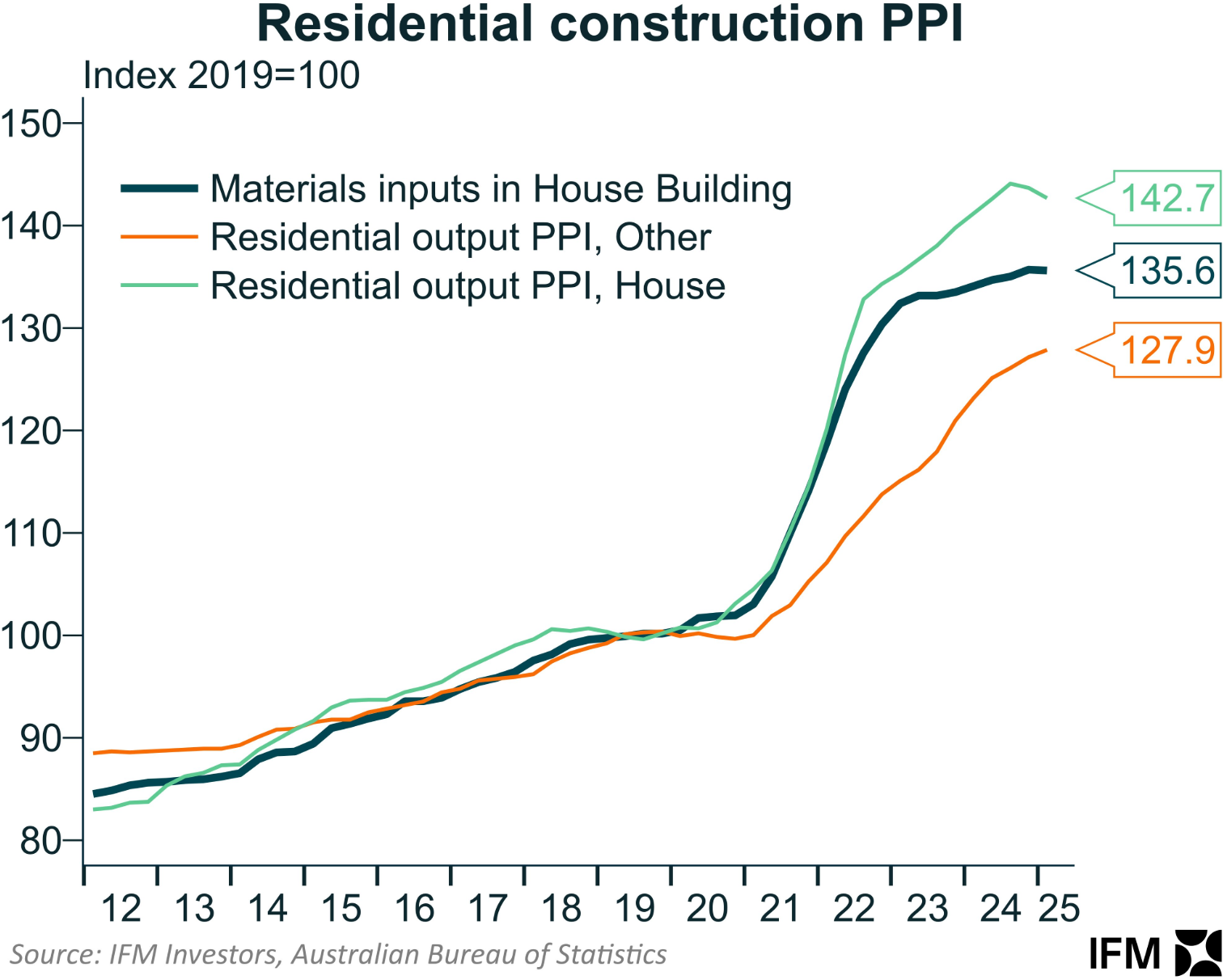
Most construction inputs have experienced significant cost increases since 2019:
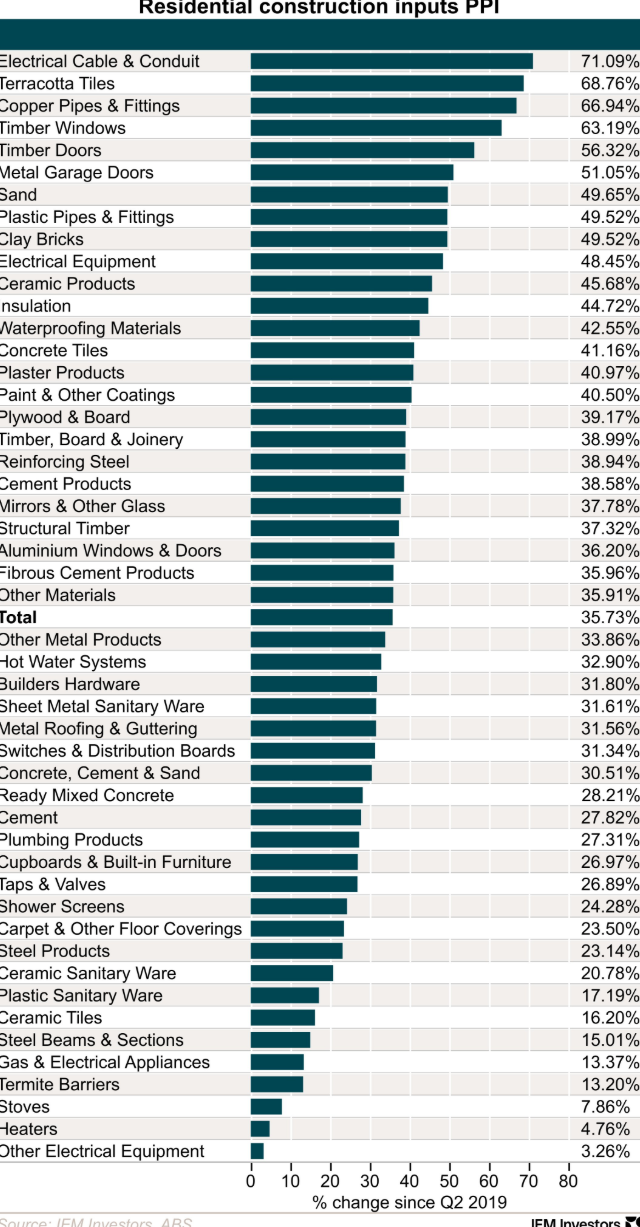
Residential lot prices have also experienced severe inflation:
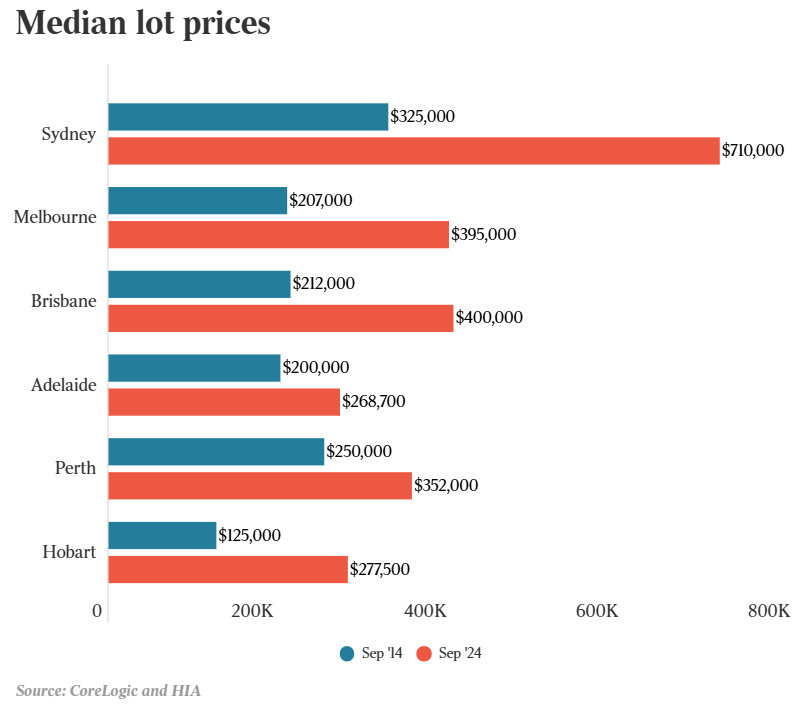
The combined hyperinflation of land and construction costs has made it too expensive to build homes in Australia.
Australia’s housing supply curve has shifted to the left, increasing the cost of construction across all price points and reducing output.
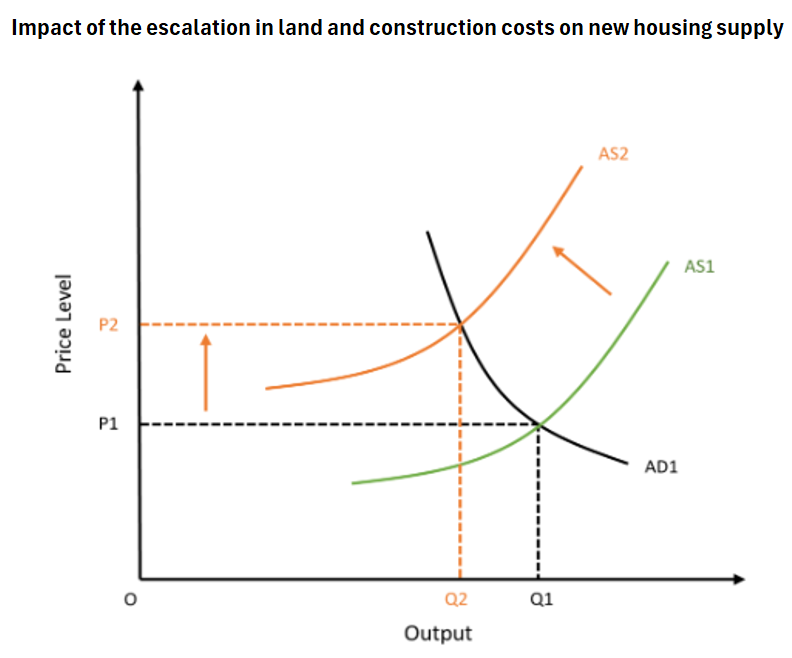
Under such conditions, the Albanese government’s housing target of 1.2 million over five years cannot be realised.
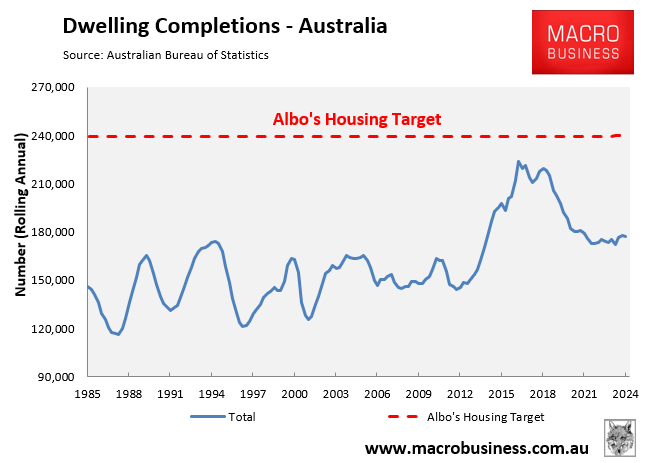
To make new housing developments economically viable, land prices and construction costs must fall.
The federal government must also limit population expansion by capping immigration to balance housing demand with supply.
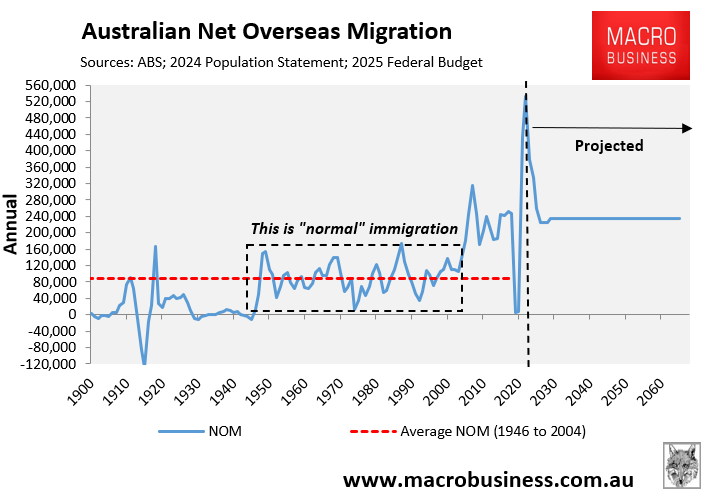
Otherwise, Australia’s structural housing shortage will worsen.

